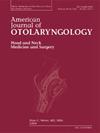四种生物制剂治疗慢性鼻窦炎伴鼻息肉的不良反应特征分析:来自WHO-VigiAccess的描述性分析
IF 1.7
4区 医学
Q2 OTORHINOLARYNGOLOGY
引用次数: 0
摘要
慢性鼻窦炎伴鼻息肉(CRSwNP)造成了重大的全球疾病负担。然而,对这些药物不良反应(ADR)的系统比较仍然很少,因此需要进行大规模的药物警戒评估。方法利用WHO VigiAccess数据库,分析了4种生物制剂(omalizumab、dupilumab、mepolizumab和tezepelumab)的402778份不良反应报告。采用描述性统计和不成比例分析(报告优势比[ROR],比例报告比[PRR])来识别27个系统器官类别(soc)的安全信号。严重程度分层包括致命、需要住院治疗和主要不良事件。结果报告中女性占56.08% ~ 65.80%,存在地域差异(美洲:70.91% ~ 91.98%)。时间趋势显示,新药物的报告激增(dupilumab: 2024年为26.62%),而旧疗法的报告率下降(omalizumab: 2019年前为44.71%)。不同的SOC模式出现:杜匹单抗主导皮肤(24.40%)和眼部不良反应(ROR = 6.51),而奥玛单抗显示妊娠相关风险升高(ROR = 12.15)。Mepolizumab的严重事件发生率(1.81%)比dupilumab(0.39%)高4.6倍。Tezepelumab表现出独特的肌肉骨骼不良反应(10.02%)和心脏风险(ROR = 3.21)。本研究描述了与机制靶点相关的药物特异性ADR概况,倡导量身定制的监测策略。研究结果强调了在CRSwNP管理中进行风险分层生物学选择的必要性,并得到了正在进行的药物警戒和机制研究的支持。本文章由计算机程序翻译,如有差异,请以英文原文为准。
Analysis of adverse reaction characteristics of four biologics for the treatment of chronic sinusitis with nasal polyps: A descriptive analysis from WHO-VigiAccess
Background
Chronic rhinosinusitis with nasal polyps (CRSwNP) imposes a significant global disease burden. However, systematic comparisons of adverse drug reaction (ADR) profiles among these agents remain scarce, necessitating large-scale pharmacovigilance evaluation.
Methods
Utilizing the WHO VigiAccess database, we analyzed 402,778 ADR reports for four biologics—omalizumab, dupilumab, mepolizumab, and tezepelumab. Descriptive statistics and disproportionality analyses (reporting odds ratio [ROR], proportional reporting ratio [PRR]) were performed to identify safety signals across 27 system organ classes (SOCs). Severity stratification included fatal, hospitalization-requiring, and major adverse events.
Results
Females accounted for 56.08 %–65.80 % of reports, with geographic disparities (Americas: 70.91 %–91.98 %). Temporal trends revealed surging reports for newer agents (dupilumab: 26.62 % in 2024) versus declining rates for older therapies (omalizumab: 44.71 % pre-2019). Distinct SOC patterns emerged: dupilumab dominated cutaneous (24.40 %) and ocular ADRs (ROR = 6.51), while omalizumab showed elevated pregnancy-related risks (ROR = 12.15). Mepolizumab exhibited a 4.6-fold higher severe event incidence (1.81 %) versus dupilumab (0.39 %). Tezepelumab demonstrated unique musculoskeletal ADRs (10.02 %) and cardiac risks (ROR = 3.21).
Conclusions
This study delineates agent-specific ADR profiles tied to mechanistic targets, advocating for tailored monitoring strategies. Findings underscore the imperative for risk-stratified biologic selection in CRSwNP management, supported by ongoing pharmacovigilance and mechanistic investigations.
求助全文
通过发布文献求助,成功后即可免费获取论文全文。
去求助
来源期刊

American Journal of Otolaryngology
医学-耳鼻喉科学
CiteScore
4.40
自引率
4.00%
发文量
378
审稿时长
41 days
期刊介绍:
Be fully informed about developments in otology, neurotology, audiology, rhinology, allergy, laryngology, speech science, bronchoesophagology, facial plastic surgery, and head and neck surgery. Featured sections include original contributions, grand rounds, current reviews, case reports and socioeconomics.
 求助内容:
求助内容: 应助结果提醒方式:
应助结果提醒方式:


